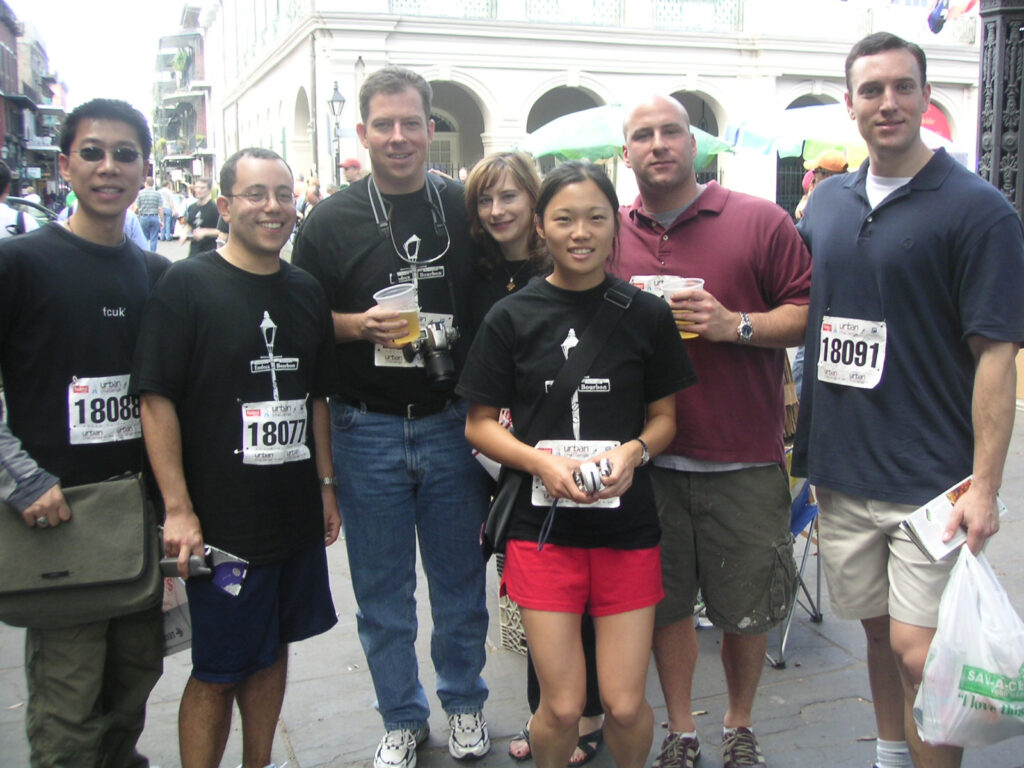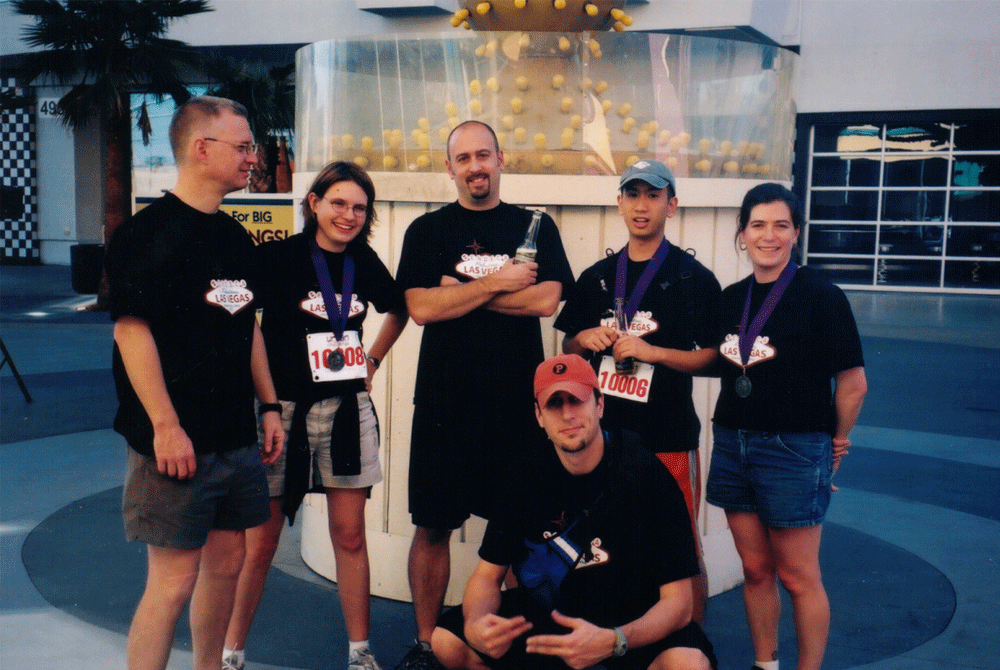
Steve Papa was a driving force behind the Endeca experience in the way that he built, challenged, thought and resourced the talented folks that worked for him as the Founder & CEO. These are the bonus learnings John, Steve, Andrew, Vinay & Julie learned from him and one thing he learned from each of them:
Comparative Advantages
Steve is really good about understanding people and their personalities. I would run business ideas past Steve and he would reply “yeah, but why would YOU do that? You have no comparative advantage”. It’s super helpful to understand that when you’re going to do something, understanding why you might have a comparative advantage to out execute your competition according to your unique skills & assets is fundamental. (J.A.)
Steve taught me the art of company building. He’s always looking for the most and neat pathways through. I learned a lot about how to think about organizational structure, fundraising, and even corporate development from the way he negotiated the exit to Oracle. (A.L.)
Thinking Really Big
Early on, Steve made sure to tell us to design our product so that it could support 4GB of RAM. For context, very few servers had that much capacity at the time. He said “just assume every server will have 4GB of RAM”. Sure enough, a couple later, every server had that capacity. In technology he taught me it’s important to think about not just what you’re doing in your own company but what other trends are happening externally and how they might intersect 3-5 years from now. Most people extract linearly about their own problem space instead of looking more holistically. The non-linear parts of technology are hard to see unless you’re looking for them. (V.M.)
Steve [Papa] was a big coach to us after Endeca. When you talk to Steve, he can sound a little crazy. He’ll say things with such conviction like “we’re going to take this really really big hill”. And you’d be like “does he really think we can take that hill? That seems really hard and really big”. He’s serious and he’s usually right. He taught me to set a high bar and think really big. Sometimes startups think too small and go after some small, niche thing that is just not a big enough idea. But it seems more doable. The big ideas seem the least doable and the most crazy. Toast was a big idea. We were going to go disrupt Micros, this $5B company. And Steve would go out and talk to people that know restaurants and they would say “yeah, that’s crazy it’s going to take 5 years to build that thing”. But we took that big thinking from Steve. And when we were recruiting people to join Toast people were excited to work on a big idea that felt different from other startups. We would tell the story of how big the restaurant industry is and how important it is to the economy and it resonated with ambitious people who wanted to work on hard problems (S.F.)
Special Operations Construct
The Special Operations team was a classic Steve move around “I can’t do the things I want to do within the constructs of the organization. Vinay, you report to me and we’re going to go do this thing”. Learning to not get bogged down by organizational inertia, if you have conviction, finding ways to go figure it out and do it is important” (V.M.)
The Special Ops team – iterating rapidly & doing customer development. Having a software product but now separating the demo team into a “product research group” to iterate rapidly on stuff they’ll use 6-9 months later in order to figure out what to put into the product (J.Y.)(J.Y.)
Protect, Reflect & Support the Team
I thought Steve did a nice job insulating employees from some of the higher level challenges he must have had at the board level that allowed employees to keep their heads down and build the company. Over the years as we’ve kept in touch he’s reflected on a lot of his own experiences and tried to bring that to our conversations around decision making and company building (V.M.)
Steve taught us how to be paranoid all the time. Like Andry Grove said “only the paranoid survive”. He taught me how to stay on my toes, be humble, and don’t worry about the last thing you did. It’s important to worry about the next thing. (S.F.)
Steve Papa undoubtedly learned a lot from the Endeca experience and all his Endecans. Here is what he learned from the five alumni we spoke with about this piece:
John Andrews – John had resigned. We sat in Starbucks and tried to paint out a career path so that he could keep learning. I’d been derelict in my duty to be more proactive on that. John is a good example of “it’s one thing to ask unreasonable things of people. It’s another when the structure of the org makes it unreasonable for them to be successful. Sometimes it’s about structuring the org to set more people up for success. Right around the time he wanted to resign I was able to give him advance notice of an upcoming re-org that would give him more responsibility in a vertical. The way we had set up our horizontal structure it was unreasonable for him to be successful”
Andrew Lau – Andrew was a culture czar. He was so attuned to culture all the time and always had a barometer on culture things. I always learned a lot from talking to him about that
Steve Fredette – Steve had a very different management style at Endeca when he was running Special Operations. He was less leading from the front and led from behind, but he showed me that both approaches can be very successful. He nurtured a lot of talent during his time at Endeca. Other folks would be hands on, almost as peers, with their team. Steve actually managed them and showed us a different way of managing that Special Operations team
Vinay Mohta – Vinay probably had some of the most persuasive arguments that, if we were going to be serious in the Business Intelligence market, we needed to build an actual application. I would say that had his voice been amplified more earlier, it could have helped been part of addressing our platform vs. application dilemma around how we had to raise capital
Julie Yoo – As we were scaling, Julie was in the services team doing implementations. Our harder implementations were either on fire or pretty smooth. The difference was usually if Julie were leading it. I remember going to our Head of Services at the time, Diane Gordon, and saying “we need to hire more people like Julie”. I was younger then and my response should have been to go to the development team and say we need to have a product that anyone can deploy and we don’t need to have Julie Yoo to make it work
We concluded our chat with Steve Papa by asking him “What drives you to give back in the way that you have?” “What else am I gonna do?” he volleyed back. He was sitting at his place up in Vermont on an unusually warm May afternoon with 5 entrepreneurs hosting an offsite. “It’s what I like doing, problem solving with a small number of people”.

KEY:
- J.A. = John Andrews, Director Strategic Marketing > VP, Marketing & Product (2004-2012)
- S.F. = Steve Fredette, Software Engineer > Sales Engineer > Manager, Special Operations > Manager, Development (2005-2012)
- A.L. = Andrew Lau, Engineer > Professional Services > VP Engineering (1999-2008)
- V.M. = Vinay Mohta, Software Architect & Developer > New Market Development (2000-2006)
- J.Y. = Julie Yoo, Software Engineer > Professional Services > Sales Engineer (2001-2006)
- S.P. = Steve Papa, Co-Founder & CEO (1999-2011)
Series Outline:

Pingback: The Endeca Effect - Markets - MGMT Boston
Pingback: The Endeca Effect - Career Insights + Conclusion - MGMT Boston
Pingback: The Endeca Effect - Products - MGMT Boston